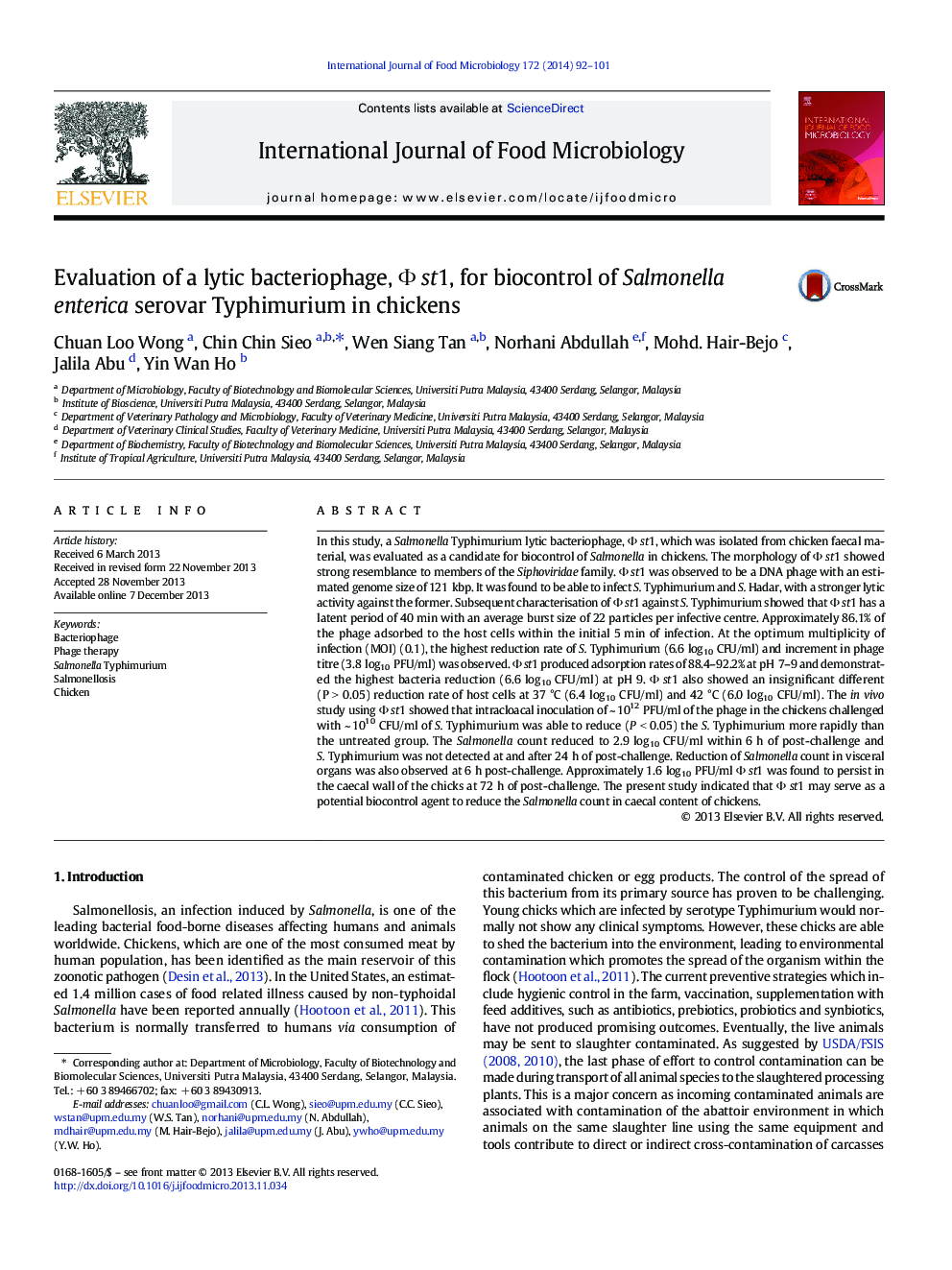| Article ID | Journal | Published Year | Pages | File Type |
|---|---|---|---|---|
| 6290118 | International Journal of Food Microbiology | 2014 | 10 Pages |
Abstract
In this study, a Salmonella Typhimurium lytic bacteriophage, Φ st1, which was isolated from chicken faecal material, was evaluated as a candidate for biocontrol of Salmonella in chickens. The morphology of Φ st1 showed strong resemblance to members of the Siphoviridae family. Φ st1 was observed to be a DNA phage with an estimated genome size of 121 kbp. It was found to be able to infect S. Typhimurium and S. Hadar, with a stronger lytic activity against the former. Subsequent characterisation of Φ st1 against S. Typhimurium showed that Φ st1 has a latent period of 40 min with an average burst size of 22 particles per infective centre. Approximately 86.1% of the phage adsorbed to the host cells within the initial 5 min of infection. At the optimum multiplicity of infection (MOI) (0.1), the highest reduction rate of S. Typhimurium (6.6 log10 CFU/ml) and increment in phage titre (3.8 log10 PFU/ml) was observed. Φ st1 produced adsorption rates of 88.4-92.2% at pH 7-9 and demonstrated the highest bacteria reduction (6.6 log10 CFU/ml) at pH 9. Φ st1 also showed an insignificant different (P > 0.05) reduction rate of host cells at 37 °C (6.4 log10 CFU/ml) and 42 °C (6.0 log10 CFU/ml). The in vivo study using Φ st1 showed that intracloacal inoculation of ~ 1012 PFU/ml of the phage in the chickens challenged with ~ 1010 CFU/ml of S. Typhimurium was able to reduce (P < 0.05) the S. Typhimurium more rapidly than the untreated group. The Salmonella count reduced to 2.9 log10 CFU/ml within 6 h of post-challenge and S. Typhimurium was not detected at and after 24 h of post-challenge. Reduction of Salmonella count in visceral organs was also observed at 6 h post-challenge. Approximately 1.6 log10 PFU/ml Φ st1 was found to persist in the caecal wall of the chicks at 72 h of post-challenge. The present study indicated that Φ st1 may serve as a potential biocontrol agent to reduce the Salmonella count in caecal content of chickens.
Related Topics
Life Sciences
Agricultural and Biological Sciences
Food Science
Authors
Chuan Loo Wong, Chin Chin Sieo, Wen Siang Tan, Norhani Abdullah, Mohd. Hair-Bejo, Jalila Abu, Yin Wan Ho,
